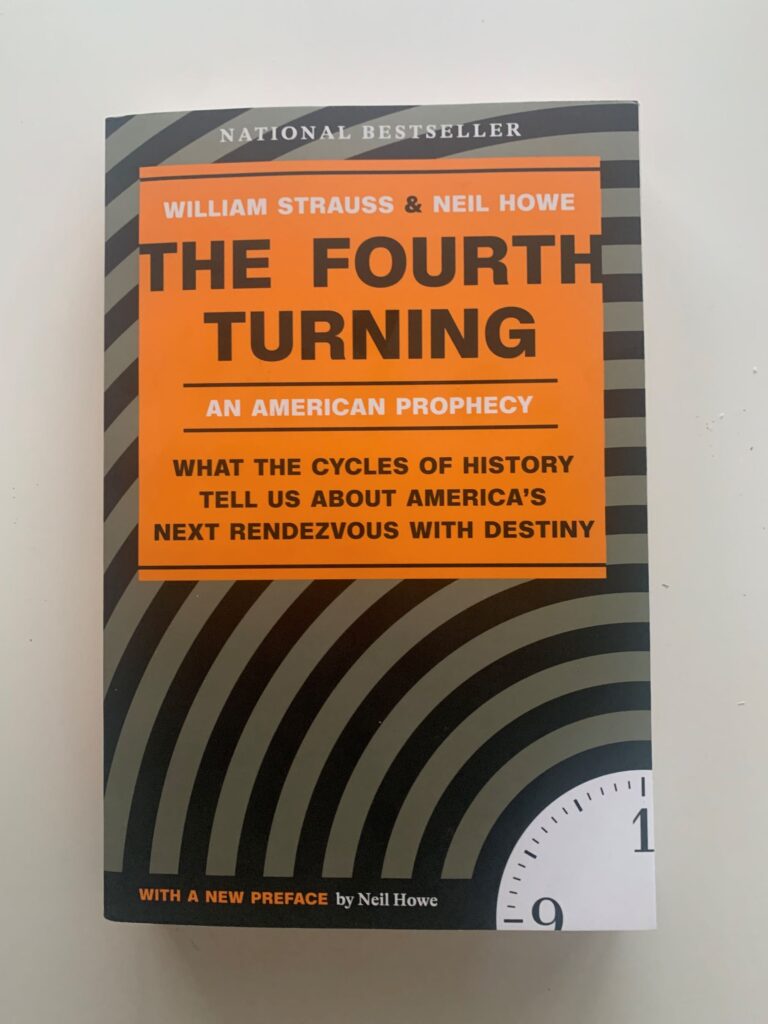At this point, we know all about the generations and the turnings. We have focused on the vocabulary that is crucial to understanding the writing. In theory, we know everything that we need to know to really integrate and understand what is our current saeculum. This chapter is all about the first turning and the American High (1946-1964)

The generations that are in play in order from oldest to youngest Lost, GI, Silent and Baby Boomers. As with all of this book, there are no clear lines. I find it easiest to work backward so the Baby Boomers were the result of the oldest Silent generation and the youngest GI generation is a good example.
My paternal grandparents fall right on the line. As an example my grandmother was born in 1925. That makes her technically part of the Silent generation since the GI generation range is 1900-1924. My grandfather was born in 1922 making him amongst the youngest of the GI generation. When I look at my maternal side, my grandfather was born in 1925 and my grandmother in 1930. This of course makes them both of the Silent generation
Like the book explains, people around the edges of a generation can take on properties of either generation. Before I did the math, I assumed that they were all of the GI generation since they were of age and involved in WWII (ignorance on the part of my maternal grandmother). Further, because all of the children were of the Baby Boom generation it was an automatic assumption. Of course, I did no math and I wasn’t a conversant of the theory like I am now.
The mood of the country was as the turning implies, high. The book makes a point to talk about the roles of each generation and their contributions to the era. I will spare the details suffice to say that the GI generation was large and in charge. They pretty much overwhelmed the remainder of Lost generation and elbowed out the Silent generation from further prominence.
Momentum is the term I would use to describe how society proceeded. As a reward for saving the world, the GI Bill is introduced causing all who qualified to become the most educated in history. That same bill made buying a shiny, new house much easier and that became the standard. Live better than your ancestors in every way.
The children of this turning (Baby Boomers) were the product of committed, successful and secure parents. This resulted in a certain coddling as well as the idea that children had a voice. Theories about the importance of what they had to say have led to the conclusion that they were destined to become entitled. This of course will manifest in the next turning.
The unity of the period resulted in things like institution building and homogenization. Factors such as TV played a strong cultural role in that beside just the mood. Medicine, food, education and socioeconomic status were all at parity during this period. Compared to rural poverty (or at least scarcity) the middle class life in the suburbs seemed like a dream.
This is probably intuitive, but I have never thought of it in this way before. Community unity drives individuality to almost nothing. As a result, issues such as Civil Rights take a back seat to group prosperity. This will of course raise its head in the next turning. My takeaway from this is that this is a watchpoint. While I don’t consider movements such as BLM as individuality, the fact that it is a social issue points to lack of cultural cohesiveness and prosperity. That is certainly an indicator of what turning we are actually in.
The American High ended with the assassination of JFK, America’s first GI generation leader. The die was cast however. He was followed by LBJ, Richard Nixon, Gerald Ford, Jimmie Carter, Ronald Regan and George HW Bush all of the GIs. From 1961 – 1992 one generation imprinted it’s nation building fingerprint on our policy and politics. That is a time frame that is fifty percent longer than the generation’s fall saeculum itself. Some might say that is undue influence.
End Your Programming Routine: It is hard to really put too much commentary on history. I think it is generally known what the stronger generations did in certain time periods. Notice I didn’t really even talk about the Lost generation nor the Silent generation. I think that is largely because those generations were really a non-factor in history. That is not to be disparaging, it still remains to be seen if Gen-X will have a hand in the next turning. We are running out of time as the oldest are in their sixties now, already stepping into Winter.
Recent Comments